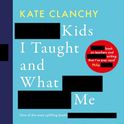Films are meant to be heard rather than listened to: that used to be industry wisdom. Cinema, the argument went, began as a visual medium; sound arrived after. And actors communicated more powerfully with their eyes and bodies than their voices. Does anyone still believe this? Many contemporary filmmakers—among them Alfonso Cuaron, Lynne Ramsay and Jonathan Glazer (whose The Zone of Interest just won Best Sound at the Academy Awards)—are sound artists as much as they are directors.
More and more directors are preoccupied by listening. Listening as art form, emotional archaeology, ethical activity, social and political battlefield. For screenings of the documentary 32 Sounds, Sam Green gives his audiences headphones, the better for them to hear the mating call of a nearly extinct moho braccatus bird. Lisa Rovner’s Sisters with Transistors is a history of female producers such as theremin pioneer Clara Rockmore and BBC Radiophonic Workshop composer Delia Derbyshire, who deployed “unfeminine” technologies to create brave new sonic worlds. Daniel Weintraub’s recent Deep Listening: The Story of Pauline Oliveros is a moving portrait of the American experimental musician who drew on ritualistic and improvisatory techniques to make the natural environment resonate.
Most compelling is Preemptive Listening by Aura Satz. The London-based artist has previously made films about dial tones and wax cylinders; her latest is on sirens. In Homer’s Odyssey, according to classical scholar Emily Wilson, sirens are depicted as “otherworldly” creatures—half-woman and half-bird—who “know everything about the war in Troy, and everything on earth.” Their voices have the power to lure sailors to their rock-dashed deaths. Since then, they have become symbols for ensorcelling, womanly wiles; melody as mesmerism. They crop up in Sinbad and Troy, in video games such as Final Fantasy, TikTok video clips.
For Satz, sirens allow us to think about danger—how to hear it and, perhaps, how to avert it. Her film ranges across the planet, alighting on sirens perched in or near unstable terrains. We’re taken to Fukushima in Japan where, in 2011, an earthquake triggered a tsunami that in turn created a major nuclear accident; to a 9km-long storm surge barrier in the Netherlands that was built to protect the country in the aftermath of the 1953 North Sea flood that killed hundreds of people; to an oil refinery in Scotland that elicits pensive thoughts about how the world is at risk from our reliance on fossil fuel.
The film’s landscapes possess a ghostly quality, a dark majesty that recalls the melancholic modernity of documentarians such as Nikolaus Geyrhalter and Michael Glawogger. Many shots are shorn of people and evoke crime scenes, abandoned civilisations, spectres of extinction. Sirens used to be almost as ubiquitous as medieval church bells: located in factories, they marked the start and end of the working day. That they’re less common now makes those scenes set in industrial plants, where they’re stress-tested or stacked up like microwaves, all the more striking. The sirens are no longer deities who tell us what to do; they are devices that do our bidding.
These siren sounds can be mechanical, repetitive, punishing
Satz, who describes her film as a “score for holding in mind the future through sound”, has assembled an impressive roster of 20 musicians—including Evelyn Glennie, David Toop, Moor Mother, Kode9, Raven Chacon, and Laurie Spiegel—to compose modern siren songs. Some resemble cold hums and liturgical drones, others are like gladed harps, wounded seas, twitchy bat signals. They can be mechanical, repetitive, punishing. The female narrator’s voice is both aphoristic and Tiresias-like: “Each siren is a tombstone for a past trauma, a burial place element invoking the dead and cautioning the living.”
Preemptive Listening is not easy listening. It often hurts the ears. Sometimes—when it features a protracted closeup of a rotating alarm light—it’s hard to look at, too. But Satz isn’t interested in making a doomy allegory about climate change; she intends her film to be a toolkit or roadmap that suggests new ways to think.
Its most powerful voice is Khalid Abdalla, who recalls hearing sirens during the Arab Spring uprisings and regarding them as hopeful rather than terrifying. They represented a “fork in the road”, his countrymen calling out modern Egypt for what it already was—a state of emergency. For him, the siren was the mouth not of authority, but of the people. It said: “No!” It said: “Another world is possible.”












